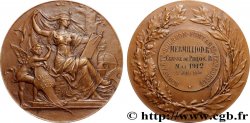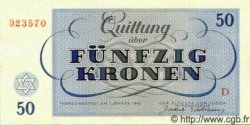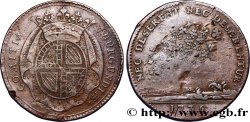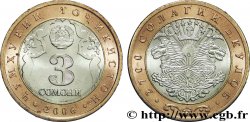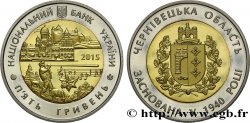E-auction 301-221060 - fme_370786 - III REPUBLIC Médaille du congrès interrégional du gaz des forêts
You must signin and be an approved bidder to bid, LOGIN TO BID. Accounts are subject to approval and the approval process takes place within 48 hours. Do not wait until the day a sale closes to register. Clicking on « bid » constitutes acceptance of the terms of use of cgb.fr private e-auctions.
Bids must be placed in whole Euro amounts only. The sale will start closing at the time stated on the item description; any bids received at the site after the closing time will not be executed. Transmission times may vary and bids could be rejected if you wait until the last second. For further information ckeck the E-auctions F.A.Q.
NO BUYER'S FEE.
NO BUYER'S FEE.
| Estimate : | 180 € |
| Price : | 33 € |
| Maximum bid : | 36 € |
| End of the sale : | 21 January 2019 18:19:00 |
| bidders : | 5 bidders |
Type : Médaille du congrès interrégional du gaz des forêts
Date: 1938
Mint name / Town : 19 - Soursac
Metal : silver plated bronze
Diameter : 41 mm
Orientation dies : 12 h.
Engraver BAUDICHON René (1878-1963)
Weight : 31 g.
Edge : lisse
Coments on the condition:
Superbe et intéressante médaille avec un très bel aspect général
Obverse
Obverse legend : CONGRÉS INTERRÉGIONAL DU GAZ DES FORETS / 1938.
Obverse description : Sous bois avec un camion et une machine à produire du gaz des forêts.
Reverse
Reverse legend : BARRAGE ET USINE DE L’AIGLE.
Reverse description : Vue du barrage de l’Aigle.
Commentary
Médaille signée RENE BAUDICHON / monogramme ER au revers.
Datée de 1938, cette date est antérieure à la construction du barrage du revers (?).
Le gazogène, inventé au XIXe siècle, est un appareil permettant de produire un gaz combustible à partir de matières solides et combustibles tels que bois (gaz de bois), charbon de bois, coke ou anthracite, permettant d'alimenter des moteurs spéciaux, dits à gaz pauvres, des moteurs à explosion classiques ou bien des chaudières. Ce système, sous la forme mise au point par Georges Imbert, fut utilisé couramment en France, pour pallier l'absence de carburant automobile pendant la Seconde Guerre mondiale. C'est en effet un appareil simple à fabriquer, ne demandant que des matériaux faciles à se procurer.
Le barrage de l’Aigle, dit « le barrage de la Résistance », fut construit pendant la Seconde Guerre mondiale. Le barrage de l'Aigle est situé en France, en partie (rive droite) sur la commune de Soursac en Corrèze, en région Aquitaine-Limousin-Poitou-Charentes et l'autre partie (rive gauche) sur la commune de Chalvignac dans le Cantal, en région Auvergne-Rhône-Alpes. Le concepteur de cet ouvrage est André Coyne, associé à un prisonnier évadé, André Decelle, lui-même ingénieur aux Ponts et chaussées et qui devint directeur général d’EDF. Deux autres personnes ont dirigé la construction du barrage : les architectes Brochet et Chabbert. Les travaux ont été retardés pour ne pas céder l’ouvrage à l’ennemi (il devait être terminé en 1942).
L’Aigle (nom qu’on lui a donné d’après une légende qui disait que des aigles nichaient sur le rocher surplombant le barrage), a été inauguré le 15 octobre 1945. Le groupe 4 a été mis en service ce jour même, puis le groupe 3 en 1947, ensuite le groupe 2 en 1950 et le groupe 1 en 1956. L’Aigle a été suréquipé d’un groupe déporté à 100 m en aval du barrage, appelé groupe 6, mis en service en 1982.
René Baudichon, né à Tours le 24 mars 1878 et mort à Paris en 1963, est un sculpteur et médailleur français. Petit neveu de Mgr Joseph Baudichon, il étudia à l'école des beaux-arts de Tours, puis en 1897 à l'école des beaux-arts de Paris. Il fut l'élève de Louis-Ernest Barrias, de François-Léon Sicard et de Frédéric-Charles Victor de Vernon. Baudichon est admis au Salon des artistes français en 1903 et y obtient successivement une médaille de bronze en 1904 pour une plaque commémorative exécutée sur une commande de la chambre de commerce de Blois, puis une médaille d'argent en 1914 et une médaille d'or en 1921 et fut classé hors concours en 1921.
Il était membre de la Société artistique et littéraire Le Cornet et signa « Boby » un certain nombre de caricatures entre 1903 et 1923..
Medal signed RENE BAUDICHON / monogram ER on the reverse.
Dated 1938, this date is prior to the construction of the revers dam (?).
The gasifier, invented in the 19th century, is a device for producing combustible gas from solid and combustible materials such as wood (wood gas), charcoal, coke or anthracite, making it possible to power special engines, known as lean gas engines, conventional internal combustion engines or boilers.. This system, in the form developed by Georges Imbert, was widely used in France to compensate for the lack of automobile fuel during the Second World War.. It is indeed a simple device to manufacture, requiring only easily obtainable materials..
The Aigle Dam, known as the \\\"Resistance Dam\\\", was built during the Second World War.. The Aigle dam is located in France, partly (right bank) in the commune of Soursac in Corrèze, in the Aquitaine-Limousin-Poitou-Charentes region and the other part (left bank) in the commune of Chalvignac in Cantal, in the Auvergne-Rhône-Alpes region. The designer of this work was André Coyne, associated with an escaped prisoner, André Decelle, himself an engineer at the Ponts et Chaussées and who became general director of EDF. Two other people led the construction of the dam: the architects Brochet and Chabbert. The work was delayed so as not to surrender the structure to the enemy (it was due to be completed in 1942).
The Eagle (name given to it after a legend which said that eagles nested on the rock overlooking the dam), was inaugurated on October 15, 1945. Group 4 was commissioned on that very day, then Group 3 in 1947, then Group 2 in 1950 and Group 1 in 1956.. The Aigle was over-equipped with a group located 100 m downstream from the dam, called group 6, put into service in 1982.
René Baudichon, born in Tours on March 24, 1878 and died in Paris in 1963, was a French sculptor and medalist.. Great-nephew of Mgr Joseph Baudichon, he studied at the School of Fine Arts in Tours, then in 1897 at the School of Fine Arts in Paris. He was a student of Louis-Ernest Barrias, François-Léon Sicard and Frédéric-Charles Victor de Vernon.. Baudichon was admitted to the Salon des artistes français in 1903 and successively obtained a bronze medal in 1904 for a commemorative plaque executed on a commission from the Blois Chamber of Commerce, then a silver medal in 1914 and a gold medal in 1921 and was classified hors concours in 1921.
He was a member of the Société artistique et littéraire Le Cornet and signed a number of caricatures \\\"Boby\\\" between 1903 and 1923.
Datée de 1938, cette date est antérieure à la construction du barrage du revers (?).
Le gazogène, inventé au XIXe siècle, est un appareil permettant de produire un gaz combustible à partir de matières solides et combustibles tels que bois (gaz de bois), charbon de bois, coke ou anthracite, permettant d'alimenter des moteurs spéciaux, dits à gaz pauvres, des moteurs à explosion classiques ou bien des chaudières. Ce système, sous la forme mise au point par Georges Imbert, fut utilisé couramment en France, pour pallier l'absence de carburant automobile pendant la Seconde Guerre mondiale. C'est en effet un appareil simple à fabriquer, ne demandant que des matériaux faciles à se procurer.
Le barrage de l’Aigle, dit « le barrage de la Résistance », fut construit pendant la Seconde Guerre mondiale. Le barrage de l'Aigle est situé en France, en partie (rive droite) sur la commune de Soursac en Corrèze, en région Aquitaine-Limousin-Poitou-Charentes et l'autre partie (rive gauche) sur la commune de Chalvignac dans le Cantal, en région Auvergne-Rhône-Alpes. Le concepteur de cet ouvrage est André Coyne, associé à un prisonnier évadé, André Decelle, lui-même ingénieur aux Ponts et chaussées et qui devint directeur général d’EDF. Deux autres personnes ont dirigé la construction du barrage : les architectes Brochet et Chabbert. Les travaux ont été retardés pour ne pas céder l’ouvrage à l’ennemi (il devait être terminé en 1942).
L’Aigle (nom qu’on lui a donné d’après une légende qui disait que des aigles nichaient sur le rocher surplombant le barrage), a été inauguré le 15 octobre 1945. Le groupe 4 a été mis en service ce jour même, puis le groupe 3 en 1947, ensuite le groupe 2 en 1950 et le groupe 1 en 1956. L’Aigle a été suréquipé d’un groupe déporté à 100 m en aval du barrage, appelé groupe 6, mis en service en 1982.
René Baudichon, né à Tours le 24 mars 1878 et mort à Paris en 1963, est un sculpteur et médailleur français. Petit neveu de Mgr Joseph Baudichon, il étudia à l'école des beaux-arts de Tours, puis en 1897 à l'école des beaux-arts de Paris. Il fut l'élève de Louis-Ernest Barrias, de François-Léon Sicard et de Frédéric-Charles Victor de Vernon. Baudichon est admis au Salon des artistes français en 1903 et y obtient successivement une médaille de bronze en 1904 pour une plaque commémorative exécutée sur une commande de la chambre de commerce de Blois, puis une médaille d'argent en 1914 et une médaille d'or en 1921 et fut classé hors concours en 1921.
Il était membre de la Société artistique et littéraire Le Cornet et signa « Boby » un certain nombre de caricatures entre 1903 et 1923..
Medal signed RENE BAUDICHON / monogram ER on the reverse.
Dated 1938, this date is prior to the construction of the revers dam (?).
The gasifier, invented in the 19th century, is a device for producing combustible gas from solid and combustible materials such as wood (wood gas), charcoal, coke or anthracite, making it possible to power special engines, known as lean gas engines, conventional internal combustion engines or boilers.. This system, in the form developed by Georges Imbert, was widely used in France to compensate for the lack of automobile fuel during the Second World War.. It is indeed a simple device to manufacture, requiring only easily obtainable materials..
The Aigle Dam, known as the \\\"Resistance Dam\\\", was built during the Second World War.. The Aigle dam is located in France, partly (right bank) in the commune of Soursac in Corrèze, in the Aquitaine-Limousin-Poitou-Charentes region and the other part (left bank) in the commune of Chalvignac in Cantal, in the Auvergne-Rhône-Alpes region. The designer of this work was André Coyne, associated with an escaped prisoner, André Decelle, himself an engineer at the Ponts et Chaussées and who became general director of EDF. Two other people led the construction of the dam: the architects Brochet and Chabbert. The work was delayed so as not to surrender the structure to the enemy (it was due to be completed in 1942).
The Eagle (name given to it after a legend which said that eagles nested on the rock overlooking the dam), was inaugurated on October 15, 1945. Group 4 was commissioned on that very day, then Group 3 in 1947, then Group 2 in 1950 and Group 1 in 1956.. The Aigle was over-equipped with a group located 100 m downstream from the dam, called group 6, put into service in 1982.
René Baudichon, born in Tours on March 24, 1878 and died in Paris in 1963, was a French sculptor and medalist.. Great-nephew of Mgr Joseph Baudichon, he studied at the School of Fine Arts in Tours, then in 1897 at the School of Fine Arts in Paris. He was a student of Louis-Ernest Barrias, François-Léon Sicard and Frédéric-Charles Victor de Vernon.. Baudichon was admitted to the Salon des artistes français in 1903 and successively obtained a bronze medal in 1904 for a commemorative plaque executed on a commission from the Blois Chamber of Commerce, then a silver medal in 1914 and a gold medal in 1921 and was classified hors concours in 1921.
He was a member of the Société artistique et littéraire Le Cornet and signed a number of caricatures \\\"Boby\\\" between 1903 and 1923.







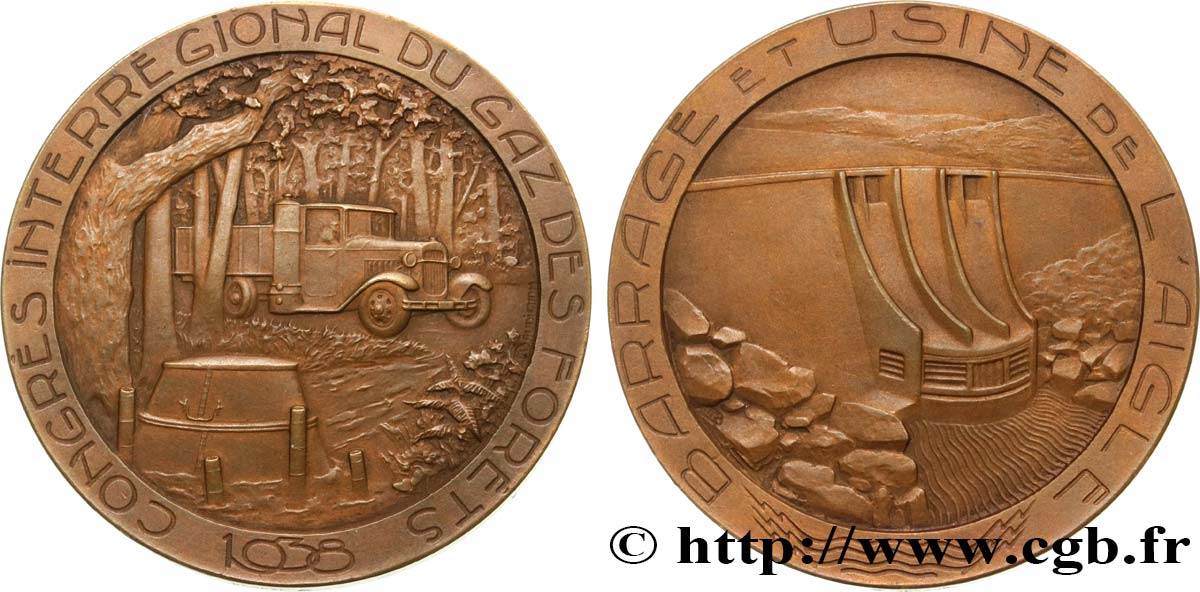
 Report a mistake
Report a mistake Print the page
Print the page Share my selection
Share my selection Ask a question
Ask a question Consign / sell
Consign / sell
 Full data
Full data



